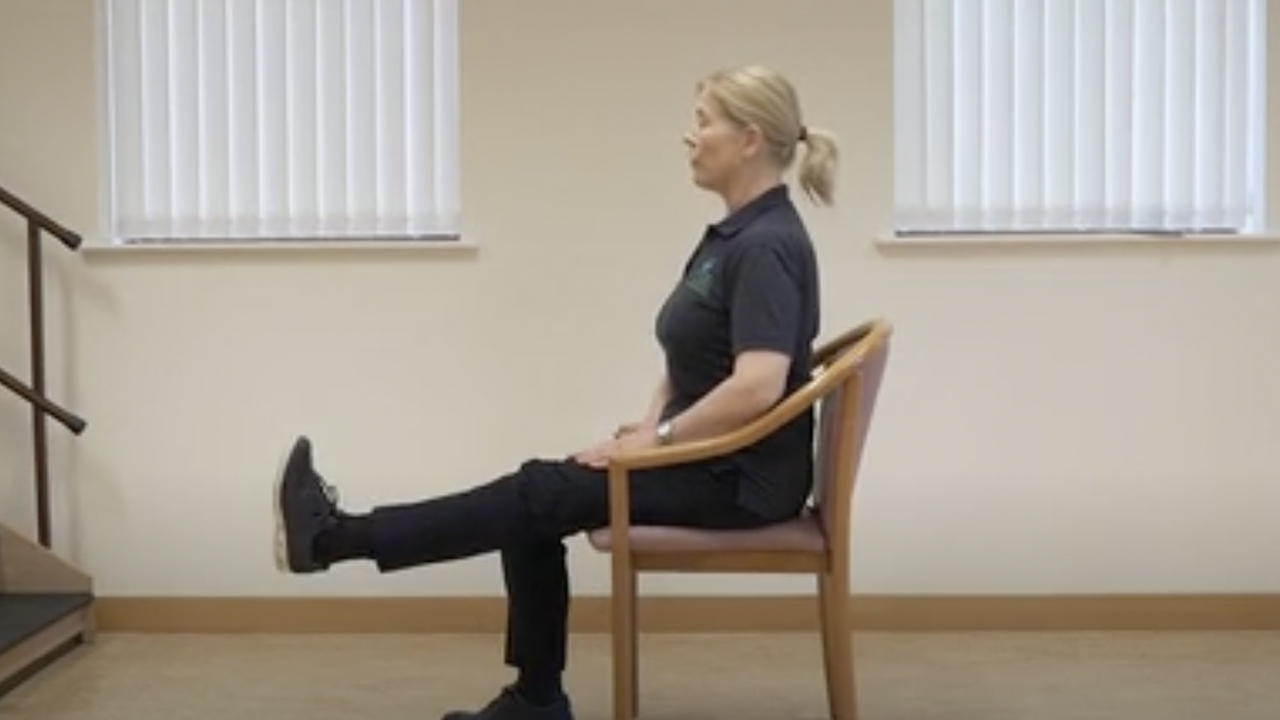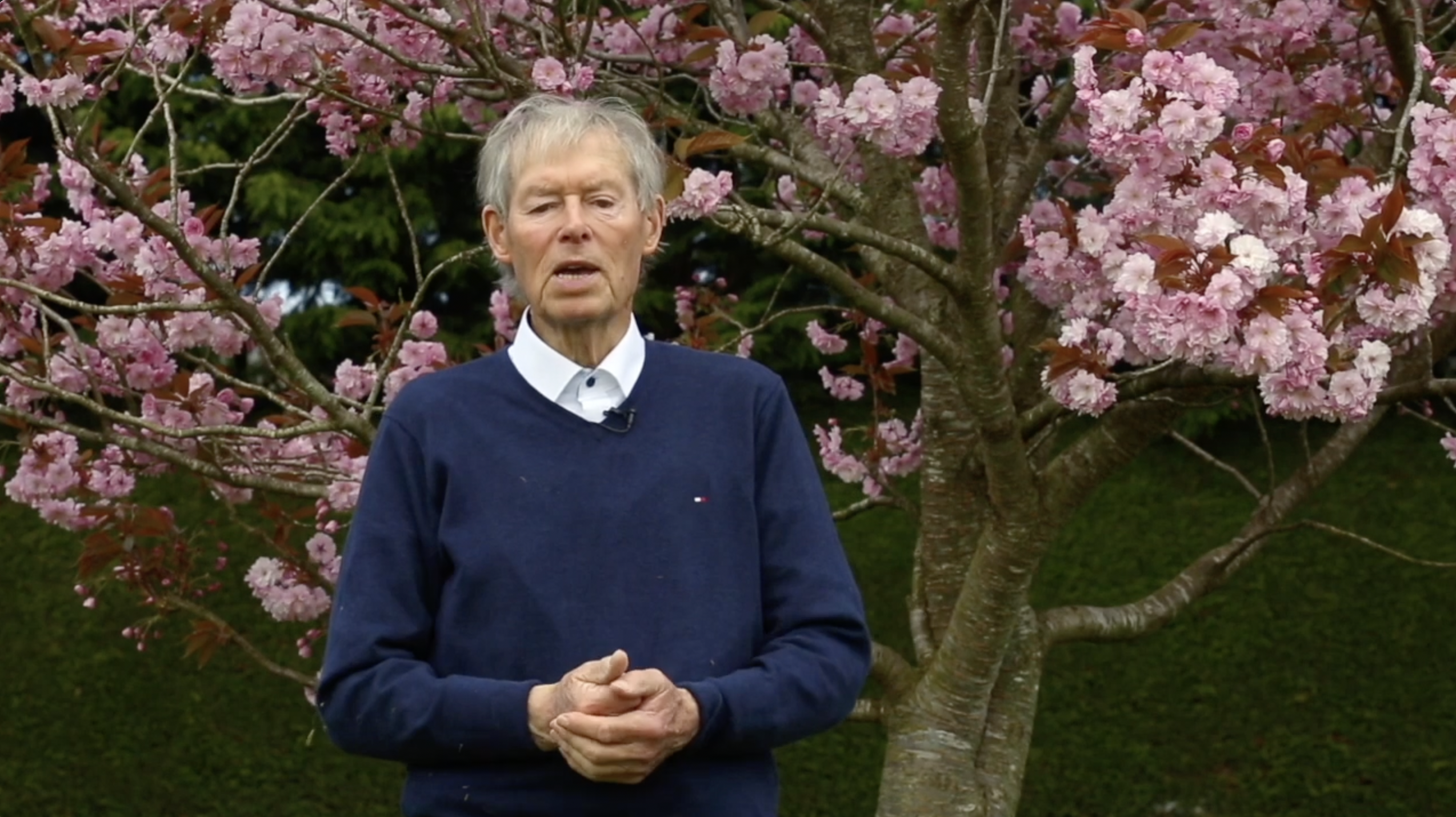E-Books, Videos, Exercises and more created in collaboration Irish Physiotherapists
Guides
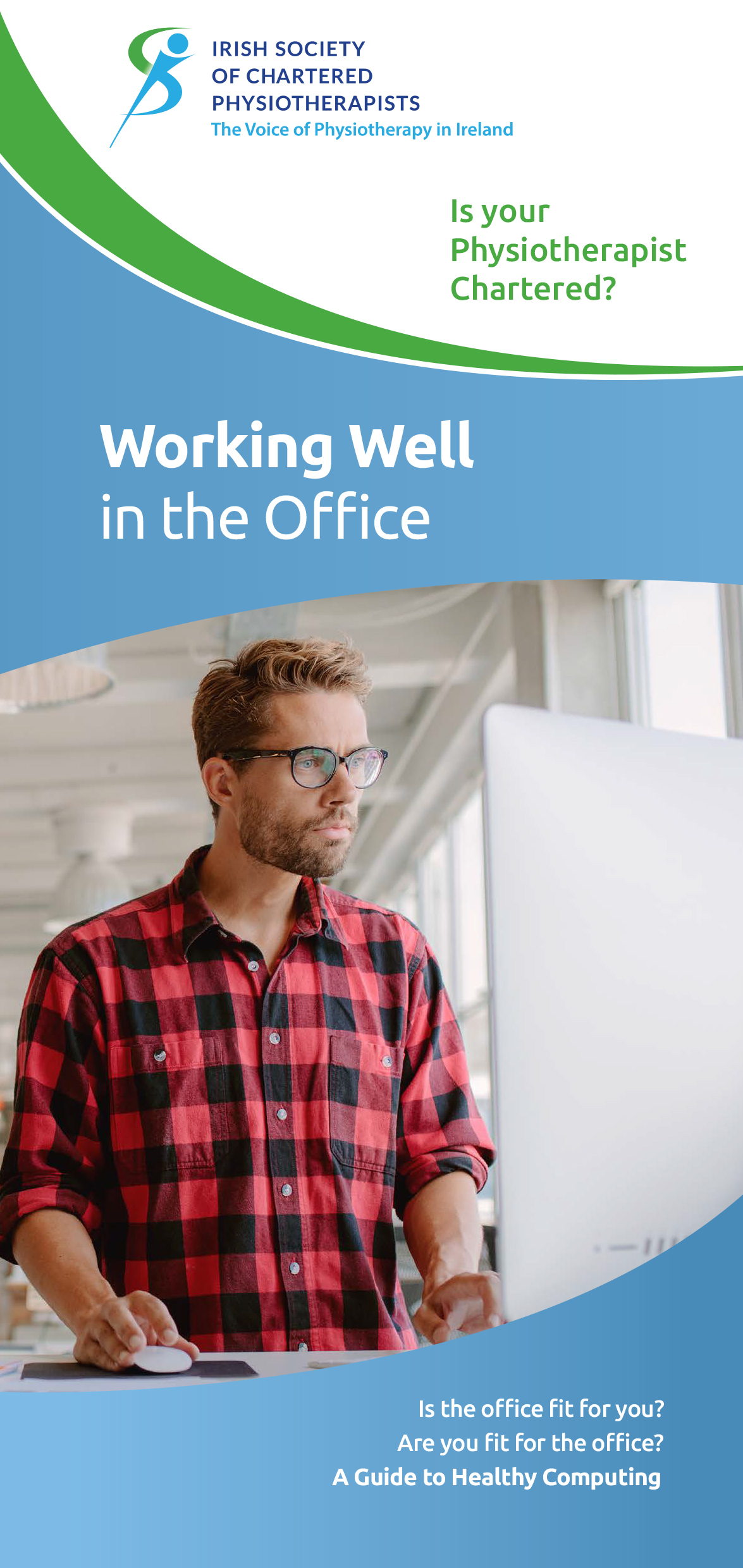
GUIDE
Working Well in the Office
Most of us are using computers as part of our work… Here are some tips on adjustments to make at your workstation and to your body position, no matter what type of screen you are using.
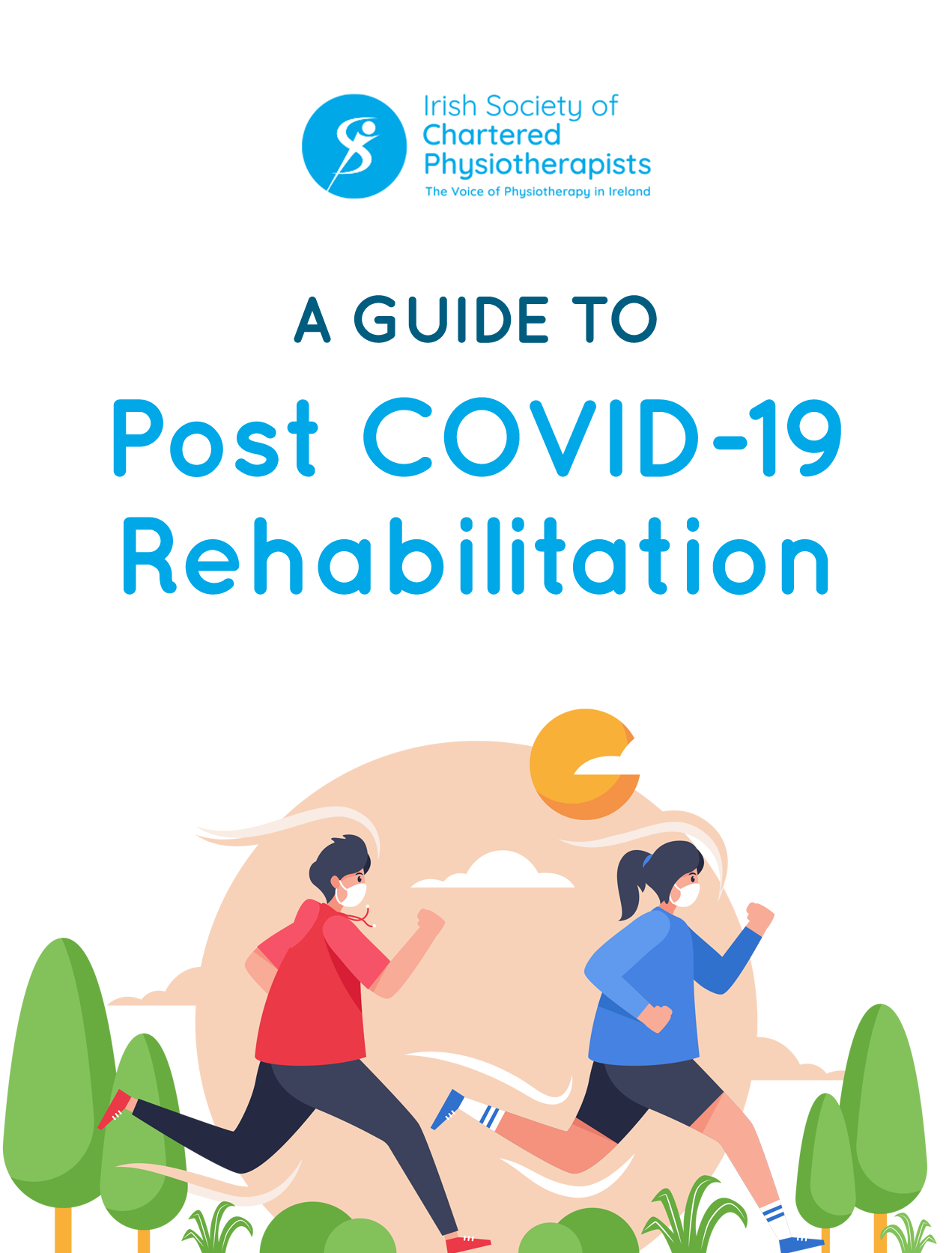
GUIDE
Post-COVID Rehabilitation Guide
This guide is designed to give you simple advice to help you recover after your admission to hospital with Covid-19.
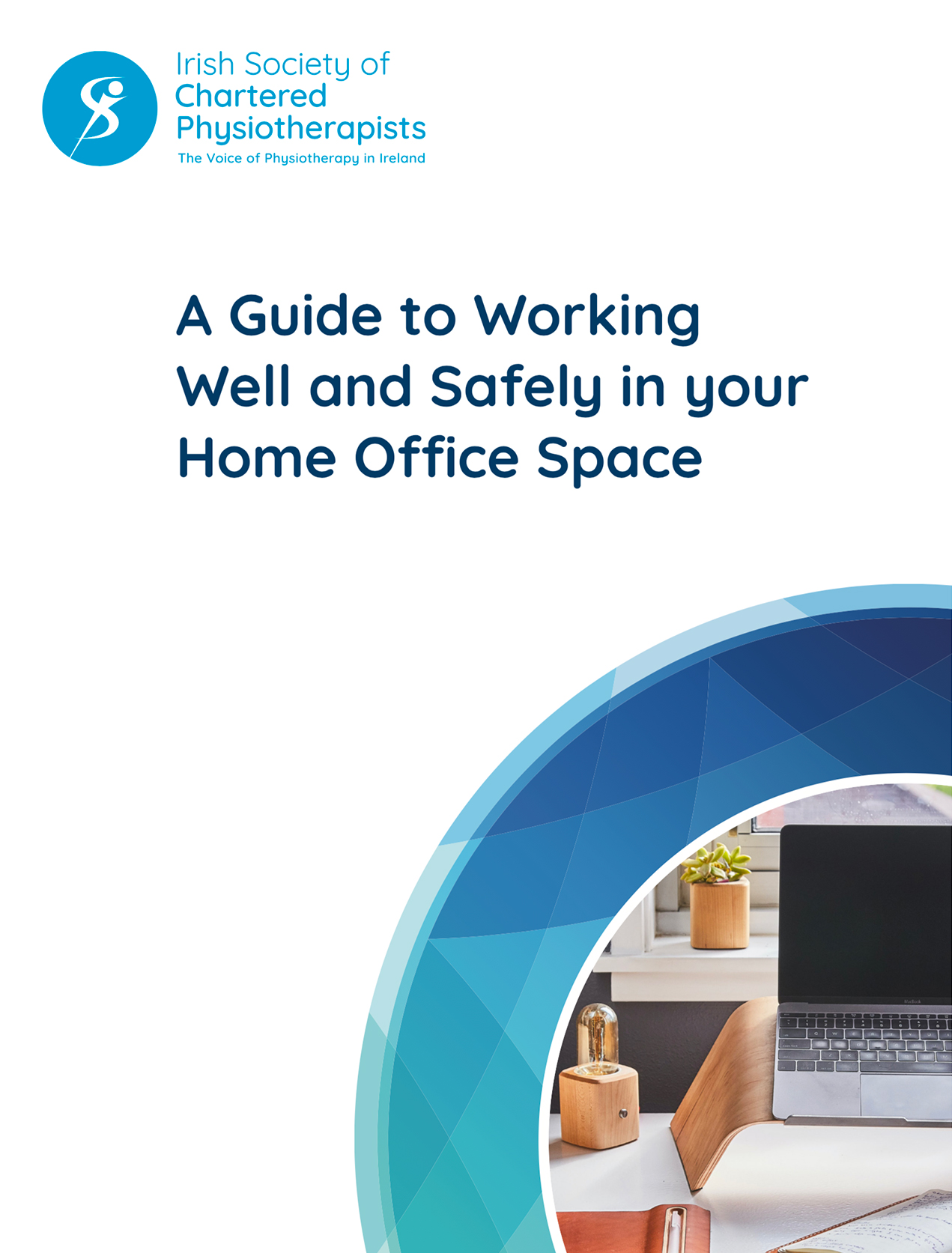
GUIDE
A Guide to Working Well and Safely in your Home Office Space
Moving regularly and continuing to be physically active is key to working well at home.
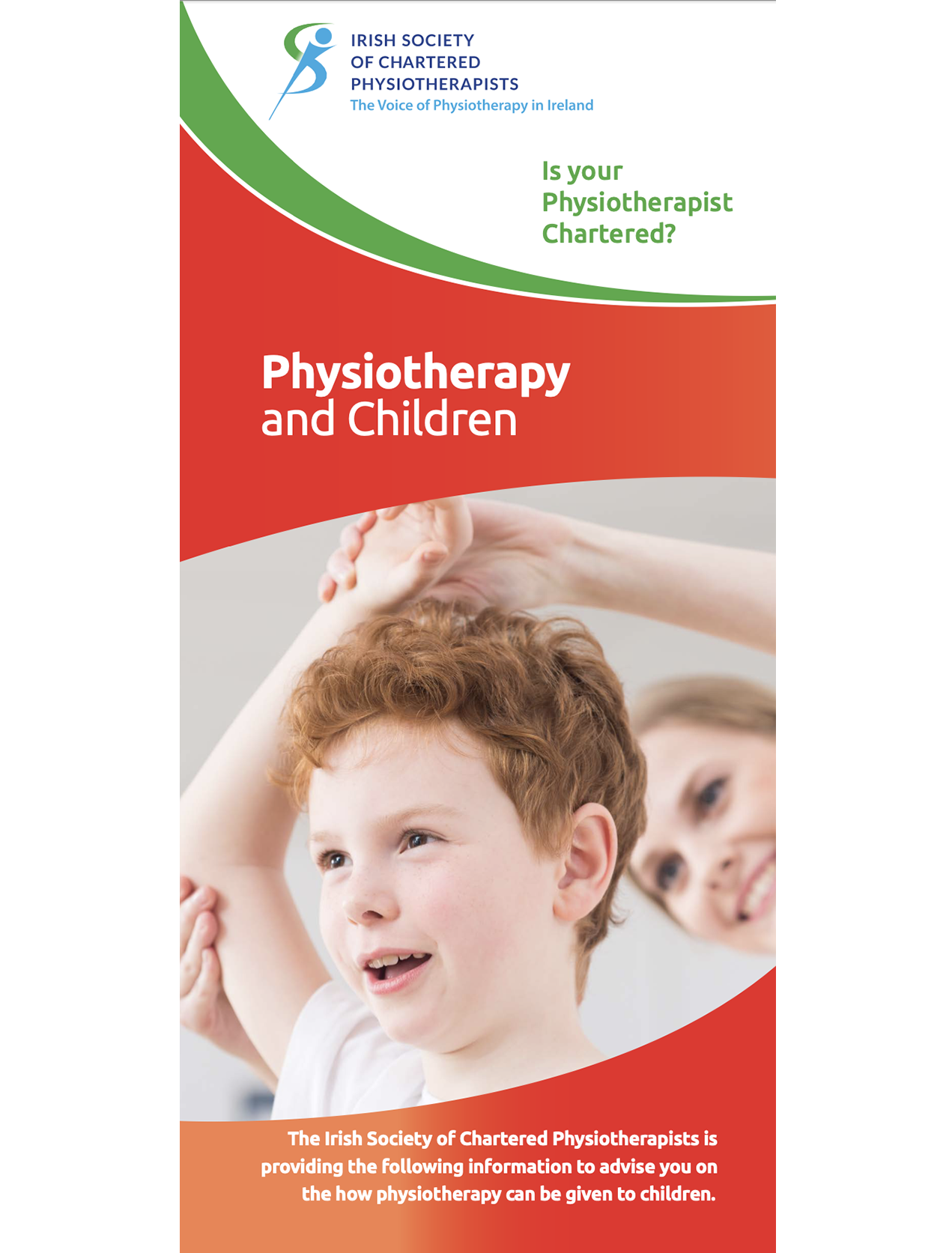
GUIDE
Physiotherapy and Children
The Irish Society of Chartered Physiotherapists is providing the following information to advise you on the how physiotherapy can be given to children.
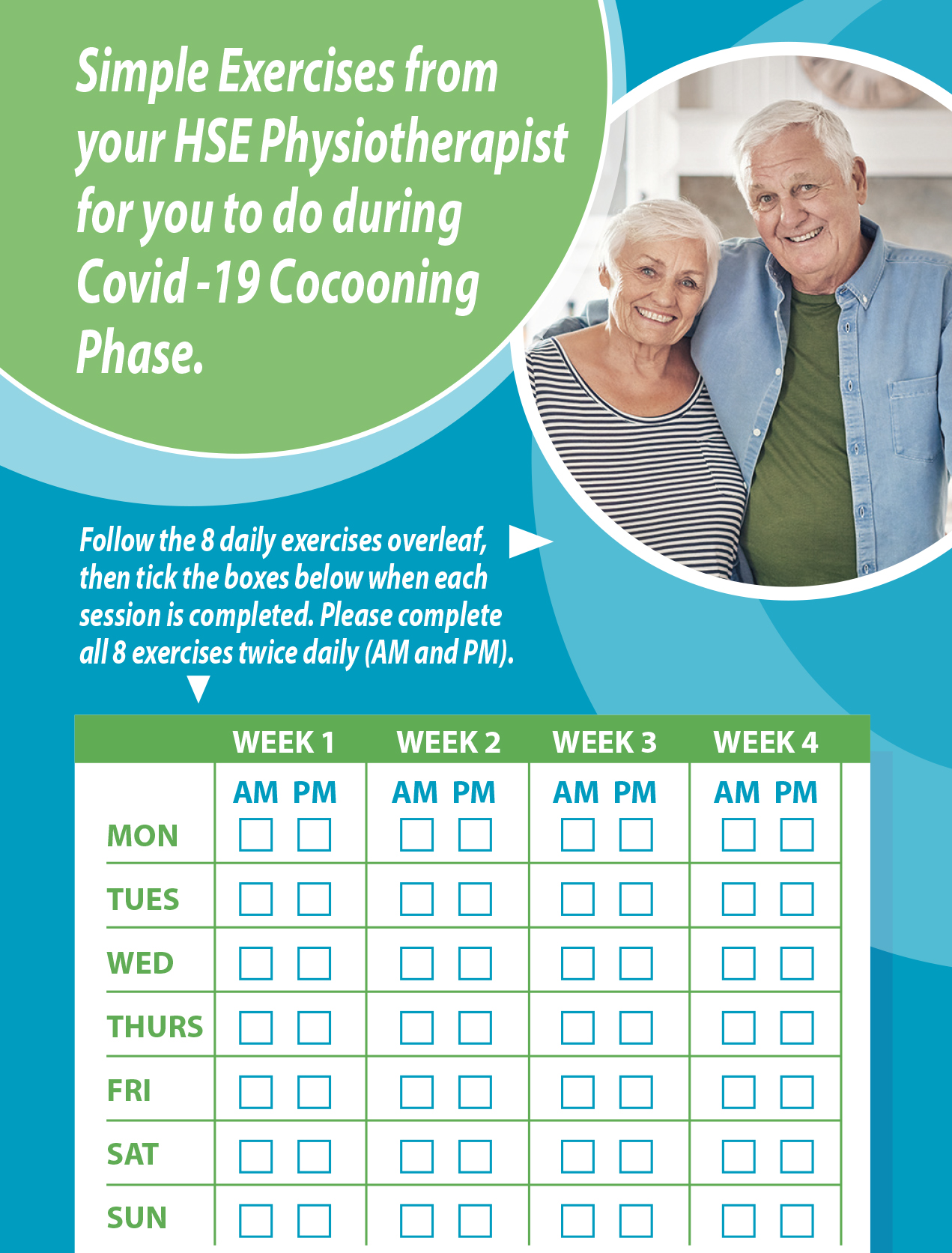
GUIDE
Simple Exercises to do while Cocooning
Follow the 8 daily exercises then tick the boxes below when each session is completed. The 8 exercises can be completed twice daily (AM and PM).
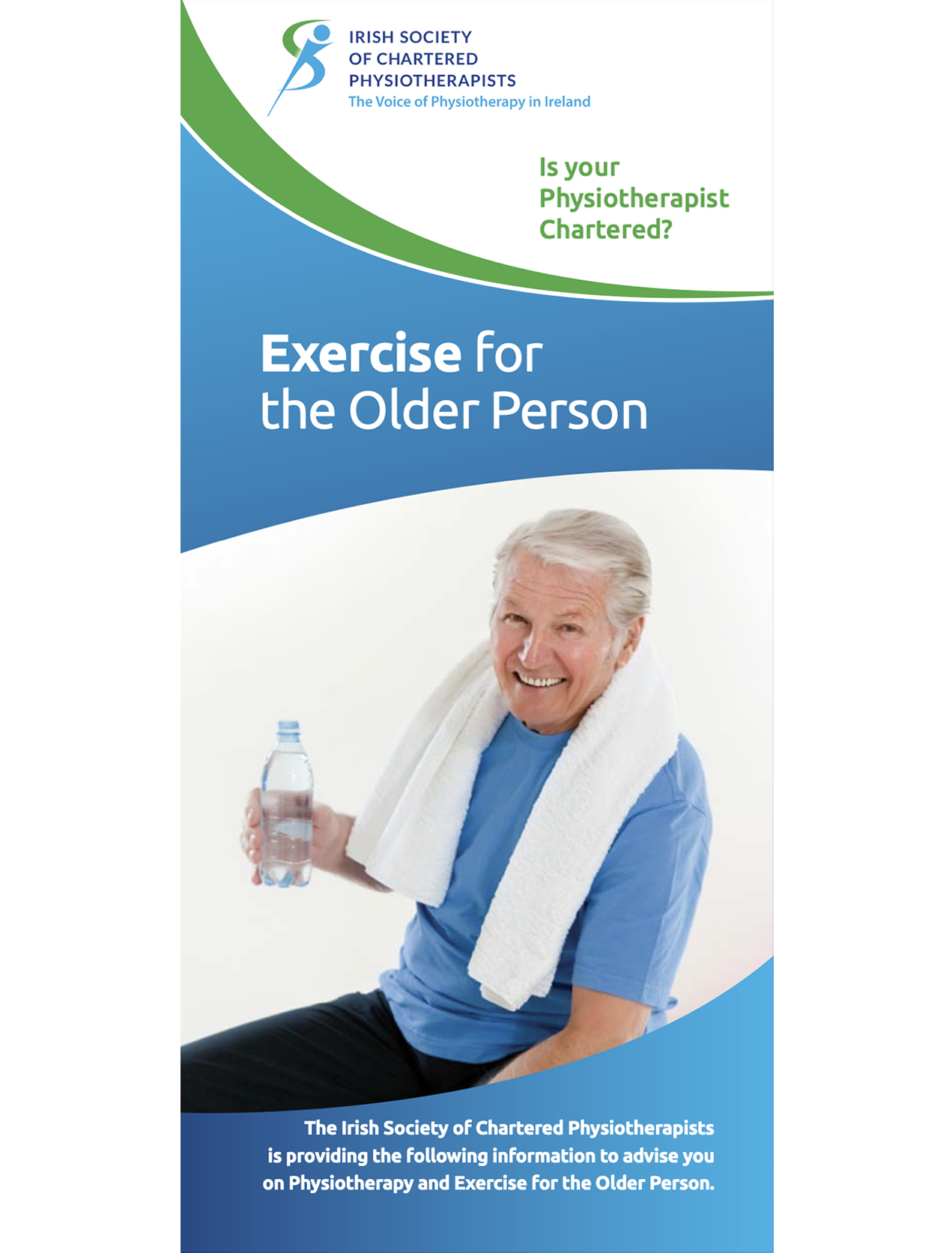
GUIDE
Exercise for the Older Person
The Irish Society of Chartered Physiotherapists is providing the following information to advise you on Physiotherapy and Exercise for the Older Person.
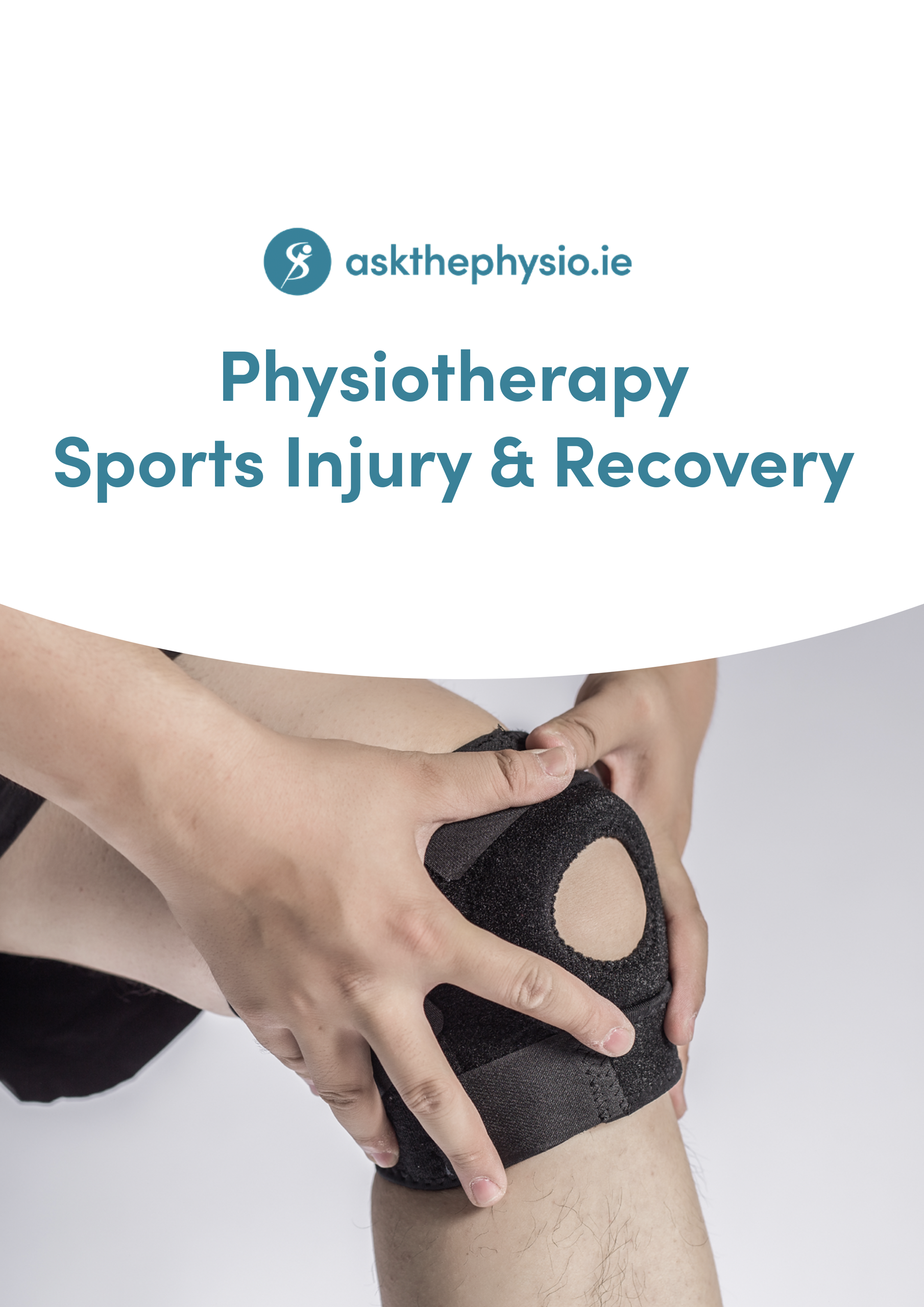
GUIDE
Sports Injury & Recovery
Participation in sport is an excellent way of undertaking physical activity. While there is a risk of injury in most sports, that risk is far outweighed by the benefits of physical activity.
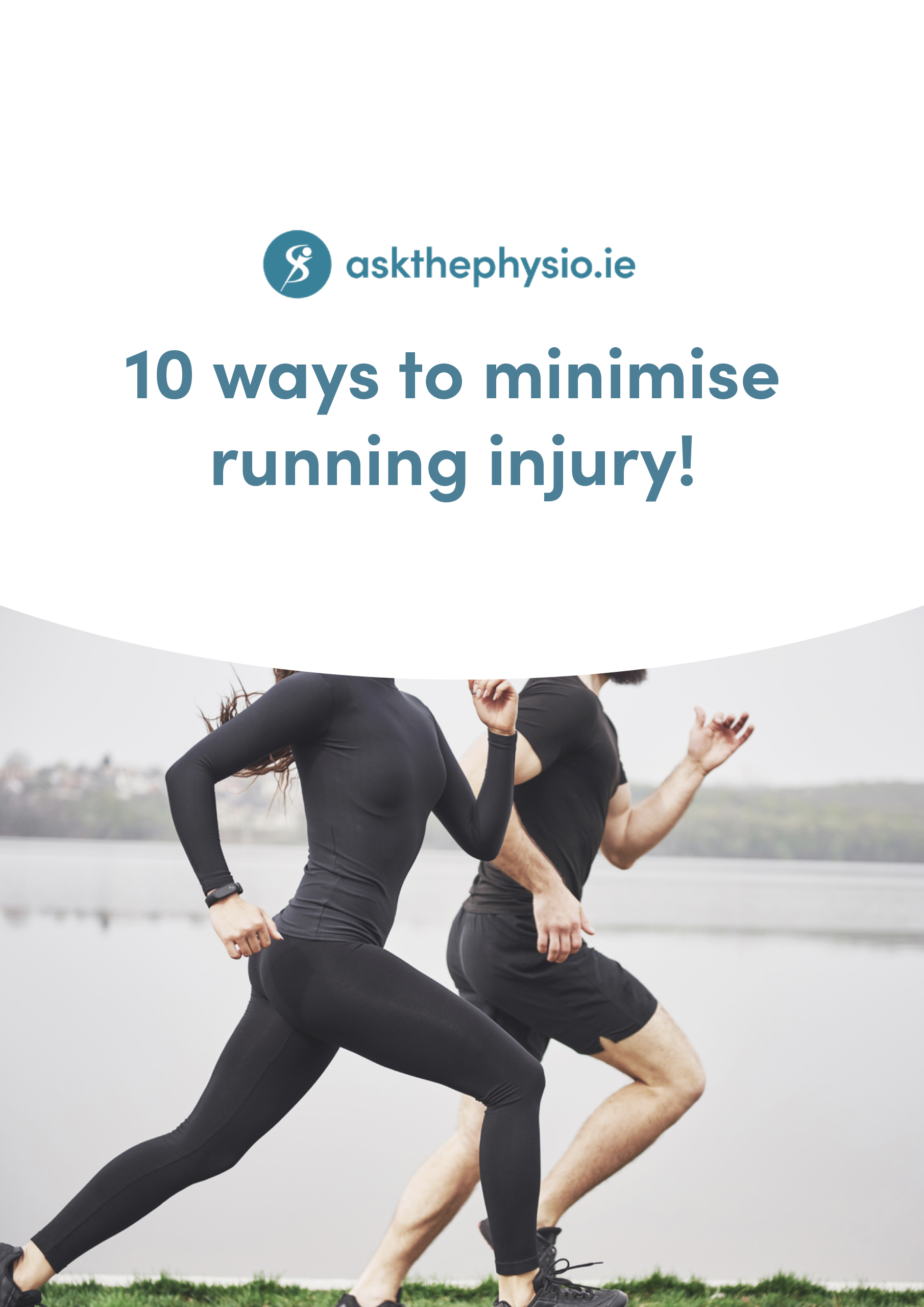
GUIDE
10 Ways to Minimise Running Injury
The Irish Society of Chartered Physiotherapists is providing the following information to advise you on minimising injuries while running.

GUIDE
Post Race Recovery
Access Post Race Recovery Strategies including active recovery, static stretches and foam rolling, including exercises.
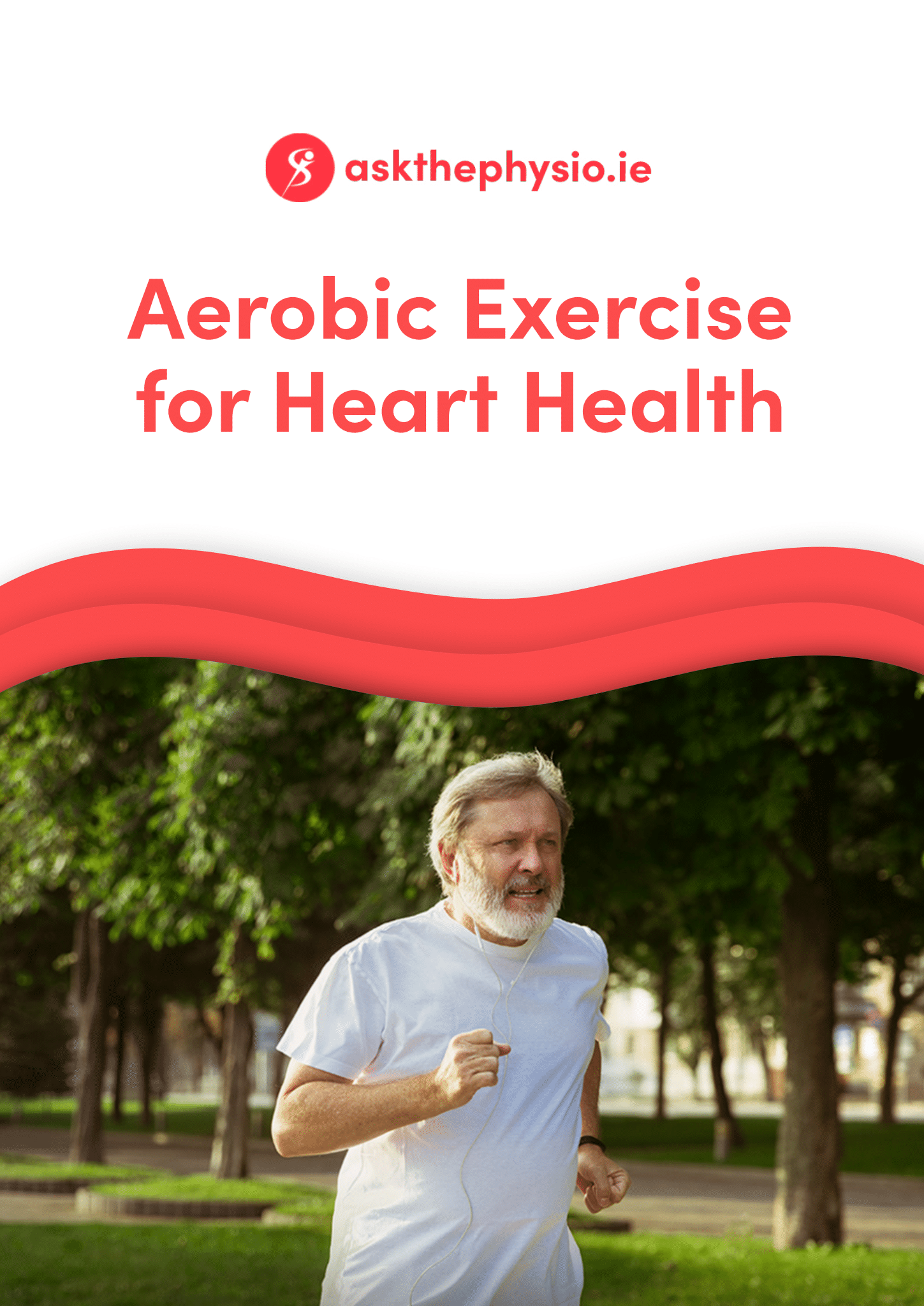
GUIDE
Aerobic Exercise for Heart Health
Access Aerobic Exercises for Heart Health including top tips when exercising, weekly guidelines, and training modalities.
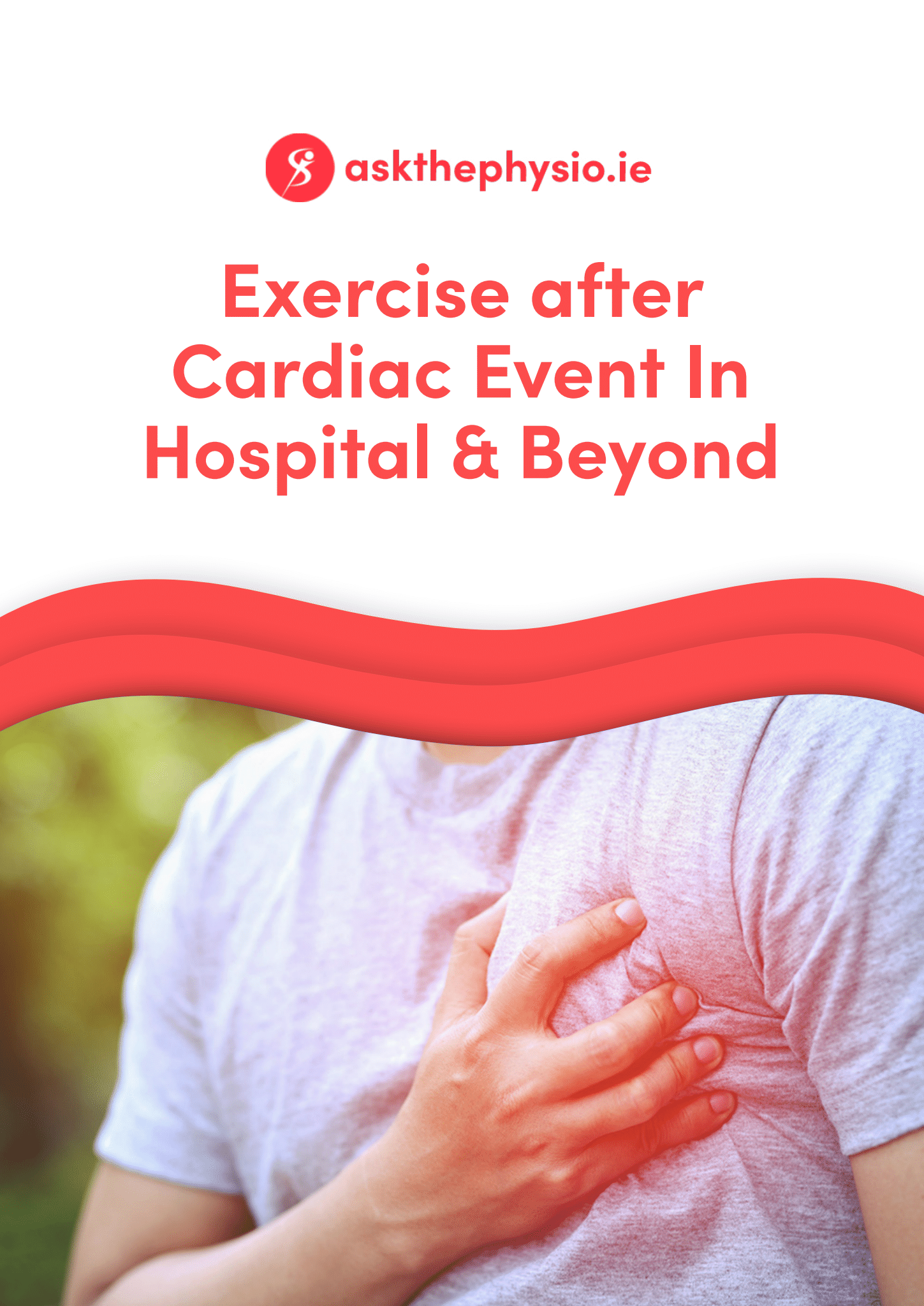
GUIDE
Exercise After Cardiac Event in Hospital & Beyond
Depending on the specifics of your event there may be different time frames & precautions prior to a return to full exercise. This resource is a general guideline to start with.
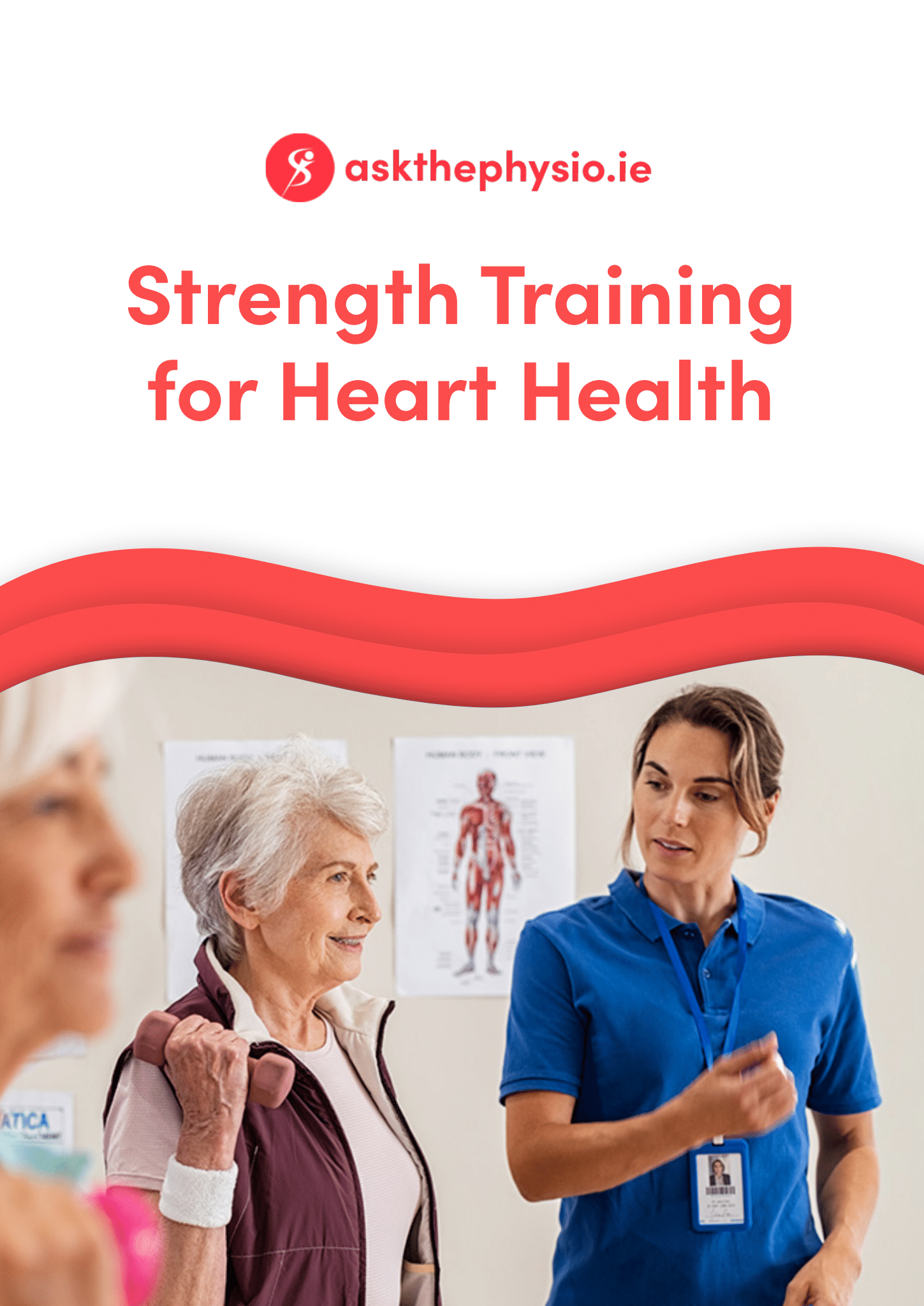
GUIDE
Strength Training for Heart Health
Strength training is exercise with the use of resistance which helps improve your muscle strength. Our strength peaks in our 20’s and 30’s, then we get a slow but natural decline. From ages 50 to 70 there is an accelerated loss reaching 15% per decade.
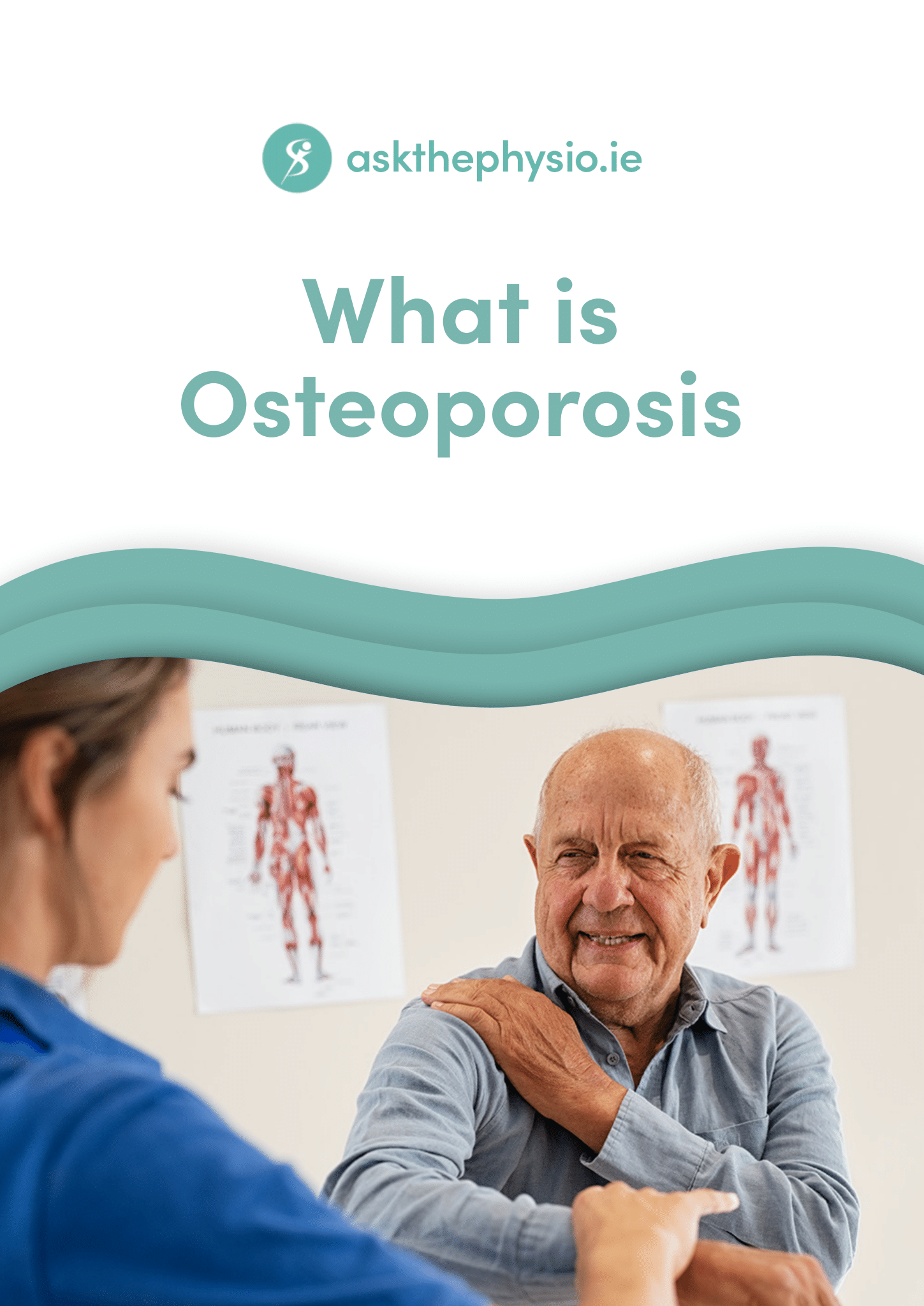
GUIDE
What is Osteoporosis?
Osteoporosis is a condition that affects the inside of bones. It causes bones to become fragile, so they break easily. It is called the silent disease because there are no signs or symptoms prior to a person breaking (fracturing) bones.
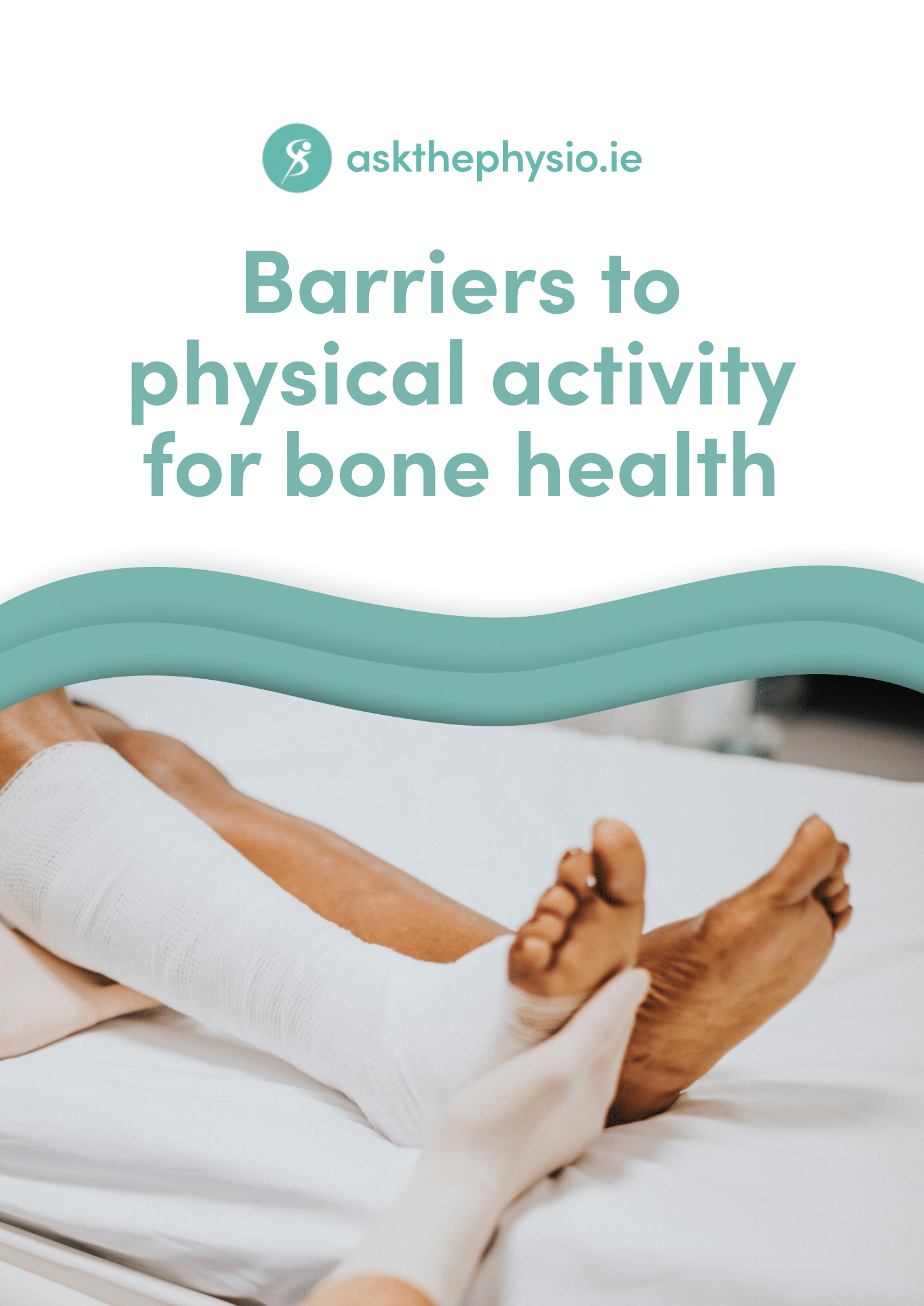
GUIDE
Barriers to Physical Activity for Bone Health
A critical factor in preventing osteoporosis, or improving our bone health, is physical activity. The type of physical activity that is most beneficial includes weight-bearing activities with impact and muscle strengthening exercises.

GUIDE
Common Sports Injuries: Diagnosis, Treatment & Timeline
For the full collection of common Summer injuries, their treatment and timelines, including hamstring tears, tennis elbow, dead legs and more, download this free resource!
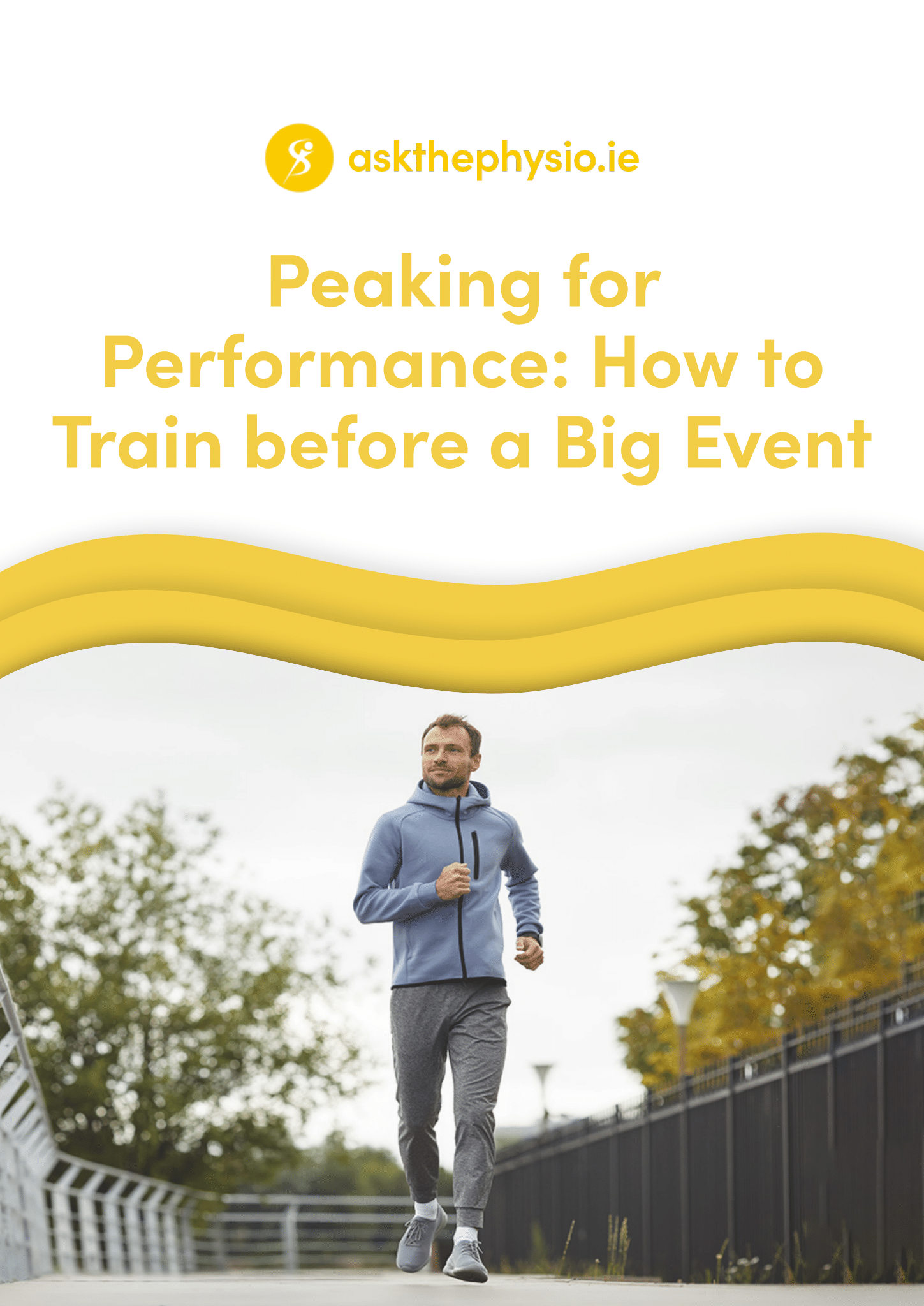
GUIDE
Peaking for Performance: How to Train Before a Big Event
Have you signed up for a long run, coming into Championship season or attending a powerlifting meet? Our guide on how to peak for performance will help you be your best when it matters most.
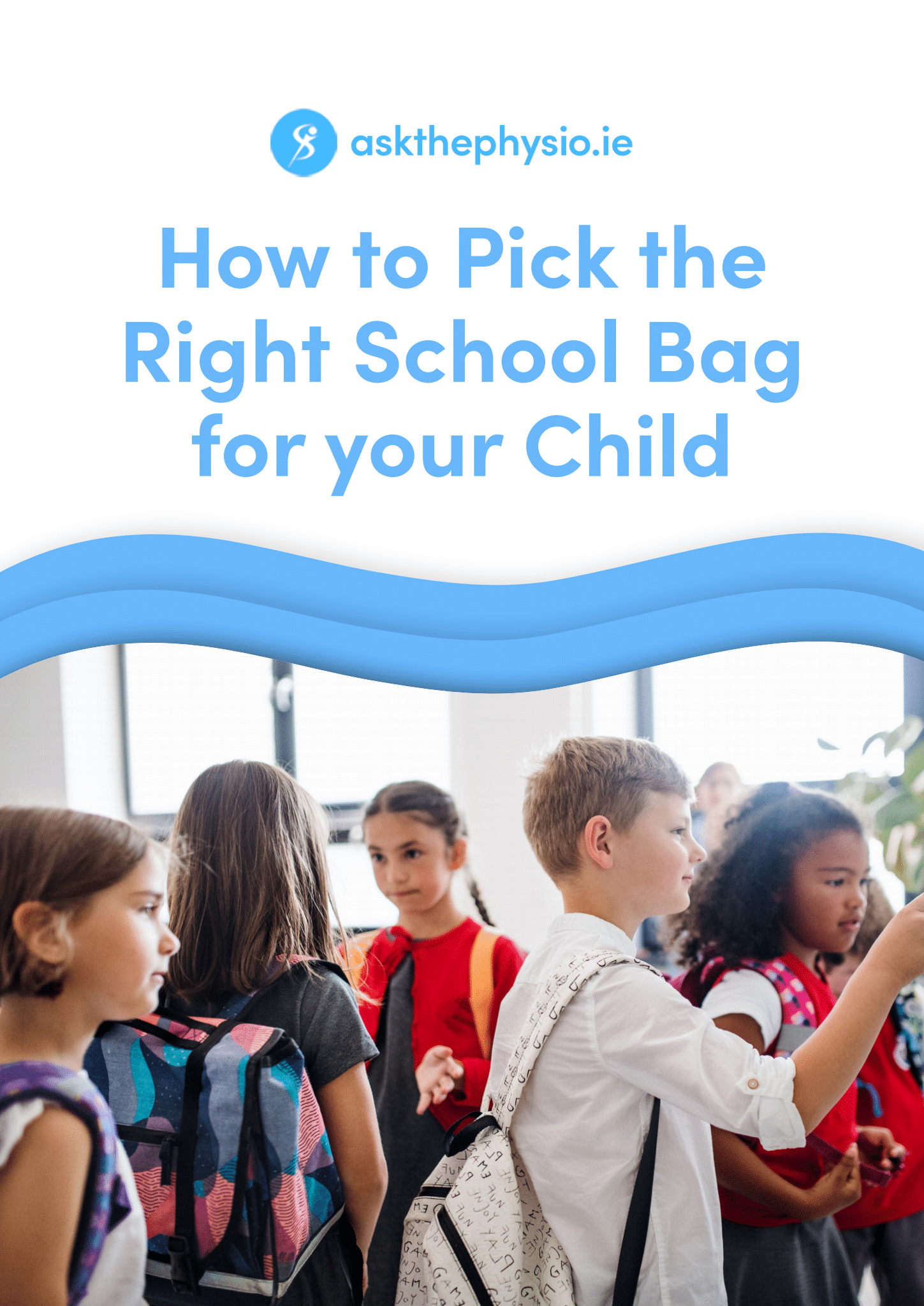
GUIDE
How to Pick the Right School Bag for your Child
While our children are busy learning, playing, eating, drinking and sleeping… they are also busy growing. This is a critical time in their lives in terms of physical development. Looking after our spines, particularly those of our young people has never been so important.

GUIDE
Congenital Muscular Torticollis (CMT): What you Need to Know
Congenital muscular torticollis (CMT) is a postural difference of the neck caused by muscle imbalance. It is typically characterized by head tilt to one side and head turn to the opposite side. CMT usually involves one of the muscles on the side of the neck called the sternocleidomastoid (SCM) muscle.

GUIDE
Osteoarthritis Mythbusting
Separate the fact from fiction when it comes to Osteoarthritis. This guide contains 7 commonly believed myths about Osteoarthritis and the truth behind each, download it now!
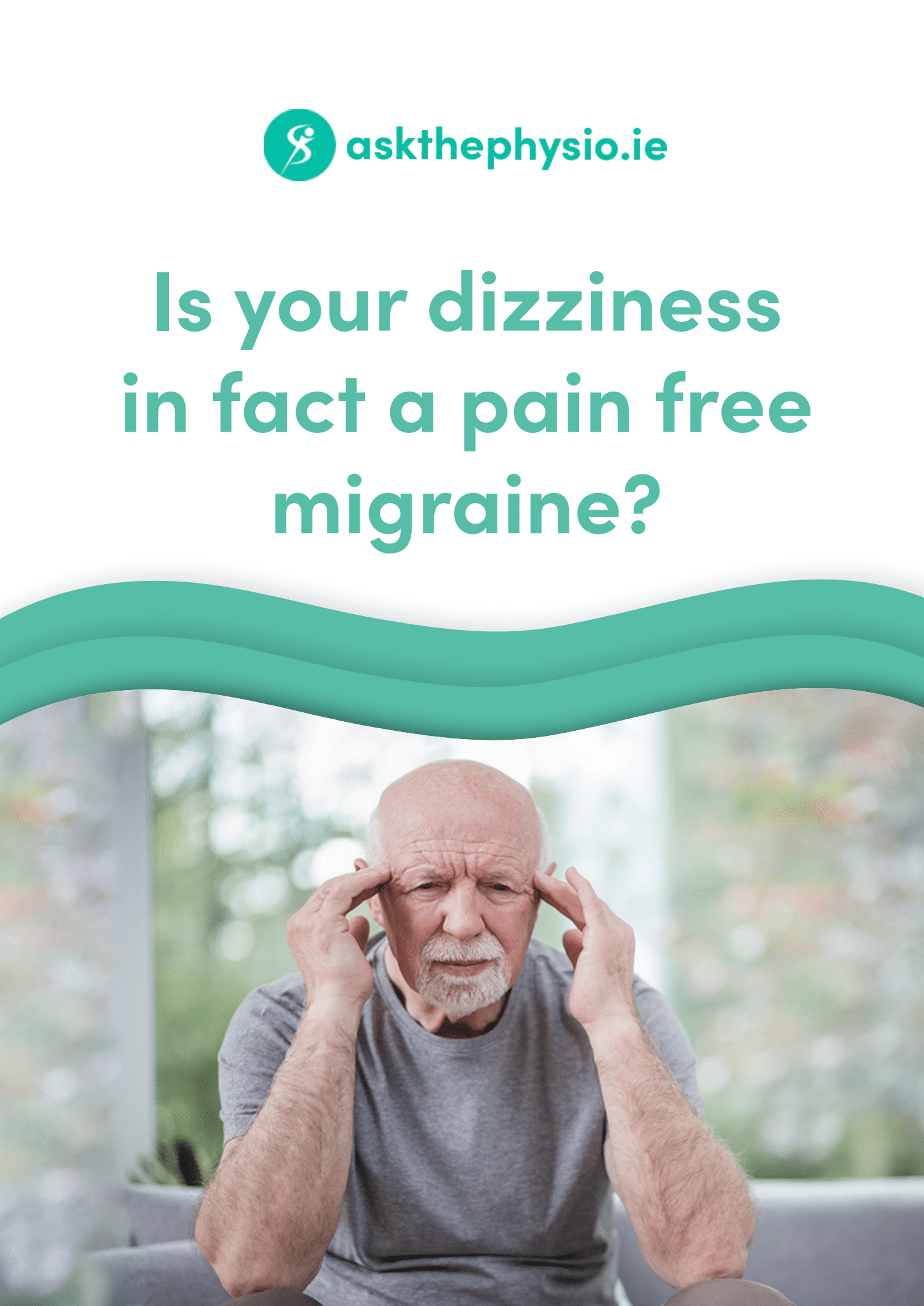
GUIDE
Is Your Dizziness in Fact a Pain-Free Migraine?
Like any condition, accurate diagnosis is the essential starting point and so once it has been identified that these patients are suffering from Vestibular Migraine, they can then be successfully managed.
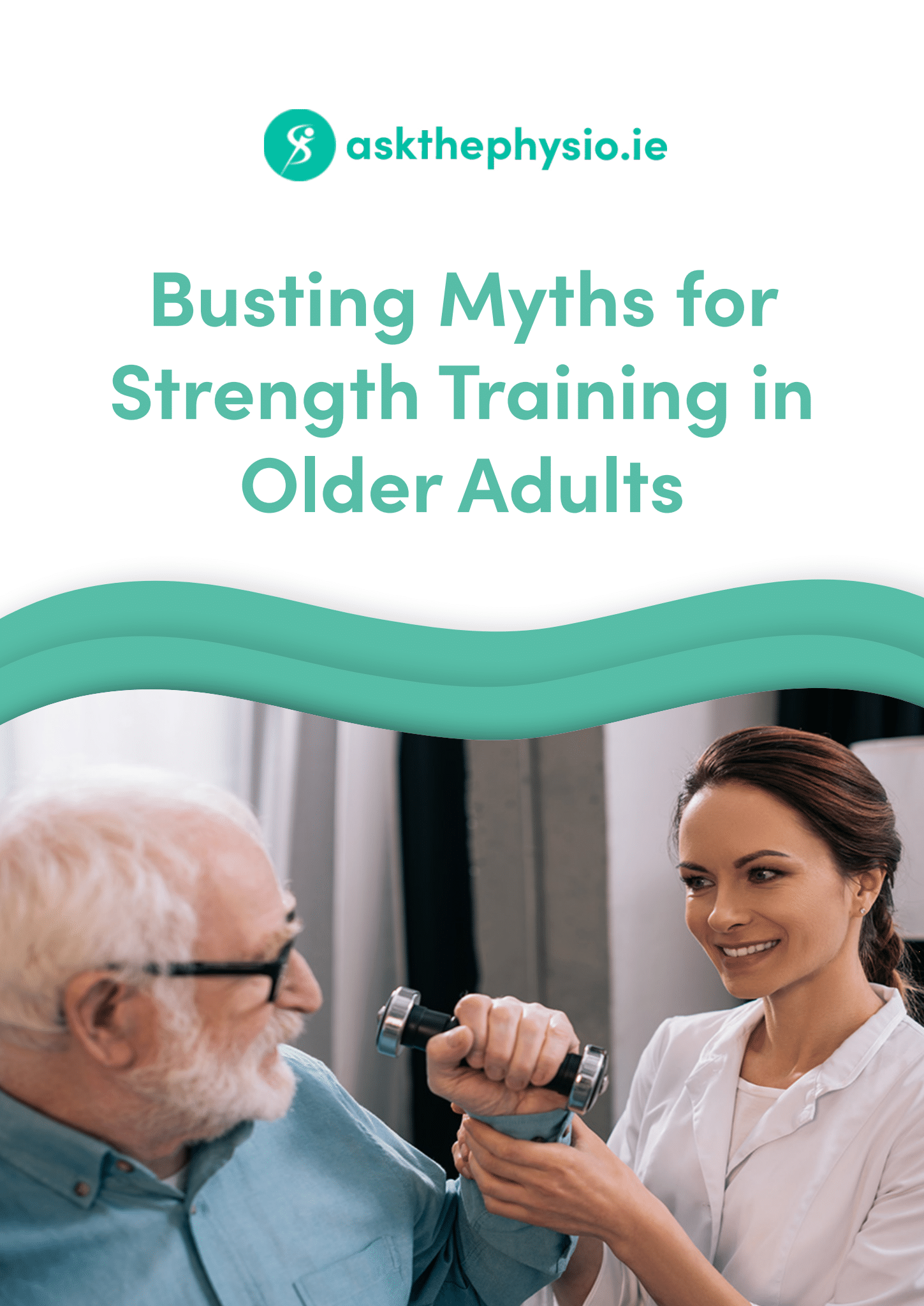
GUIDE
Busting Myths for Strength Training in Older Adults
Muscle mass increases from birth and peaks at age 30/35, it then quickly decreases after age 65 for women and 70 for men.
Strength training can combat this loss of muscle strength, muscle mass and bone
density associated with ageing.
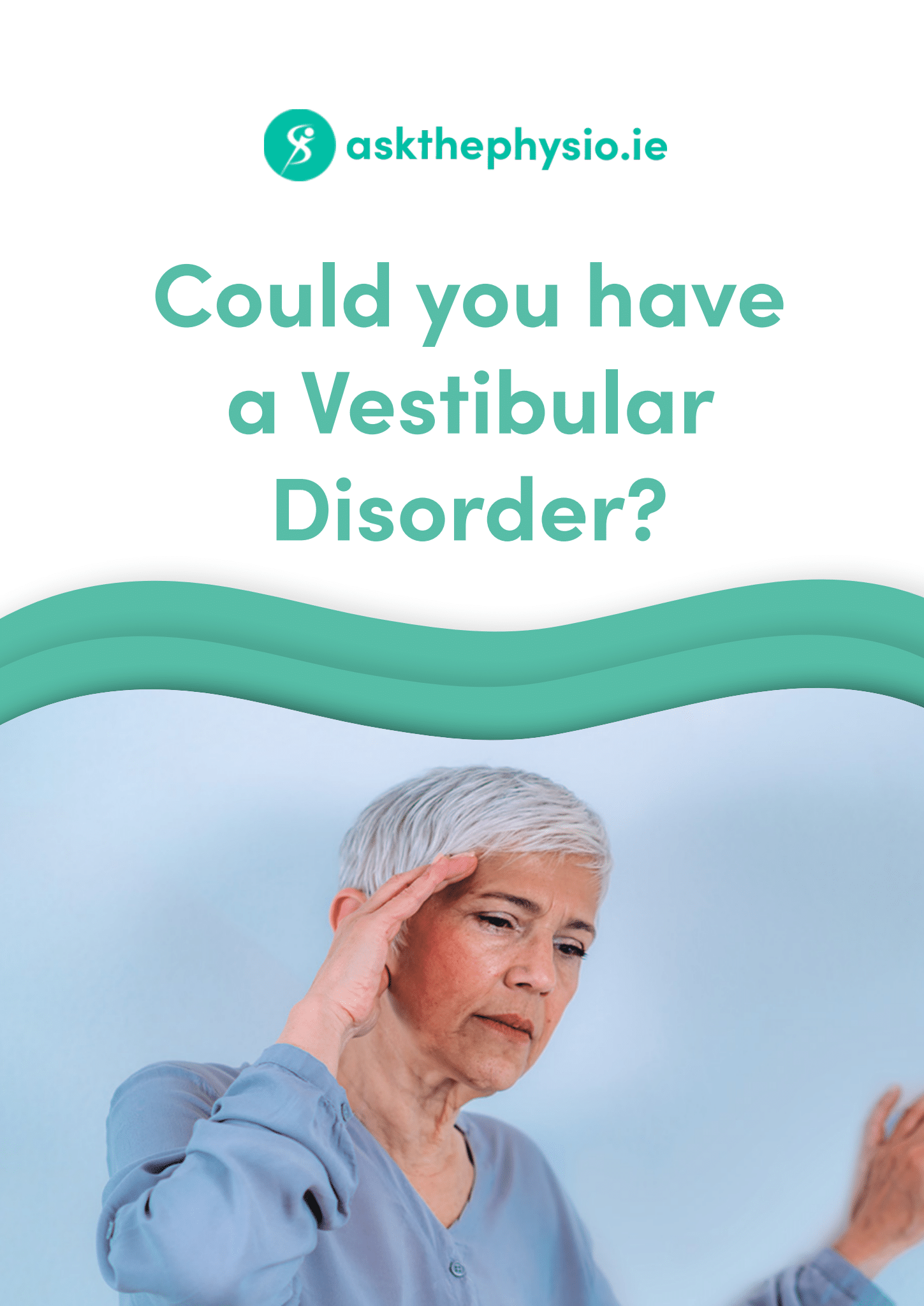
GUIDE
Could You Have a Vestibular Disorder?
People are often of the belief that they suffer from a condition called “vertigo” which is in fact a symptom, not a diagnosis! People go undiagnosed for years, incorrectly thinking that their only choice is to live with it! Vestibular disorders affect balance and often produce disabling symptoms that include vertigo, dizziness, balance problems and difficulty concentrating.
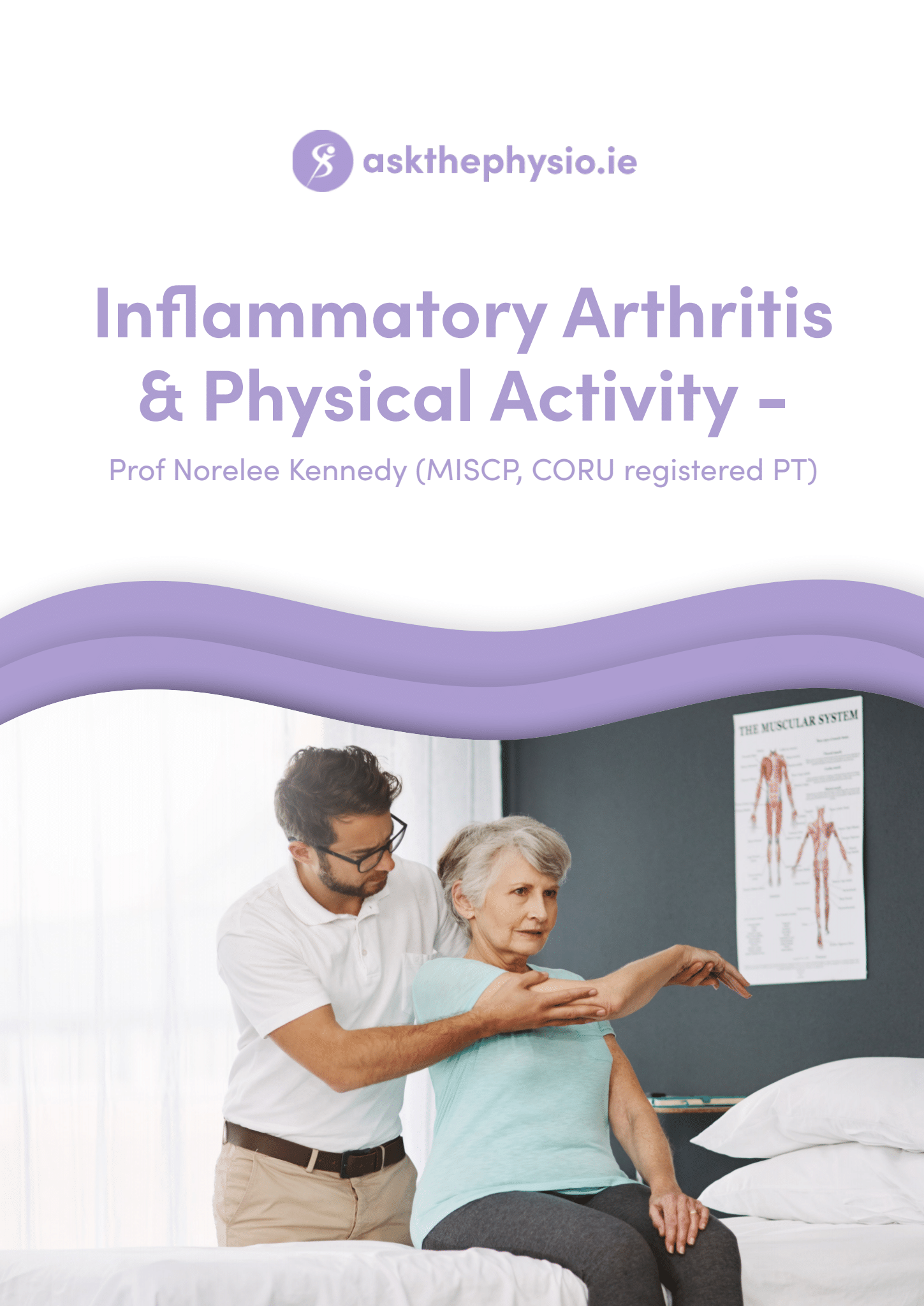
GUIDE
Inflammatory Arthritis & Physical Activity
Everyone benefits from being physically active. Studies show that people with arthritis who engage in regular physical activity, as is possible for their individual preferences and resources, helps their overall quality of life as well as helping build muscle strength, improving cardiorespiratory fitness, and helping with maintaining a healthy body weight.
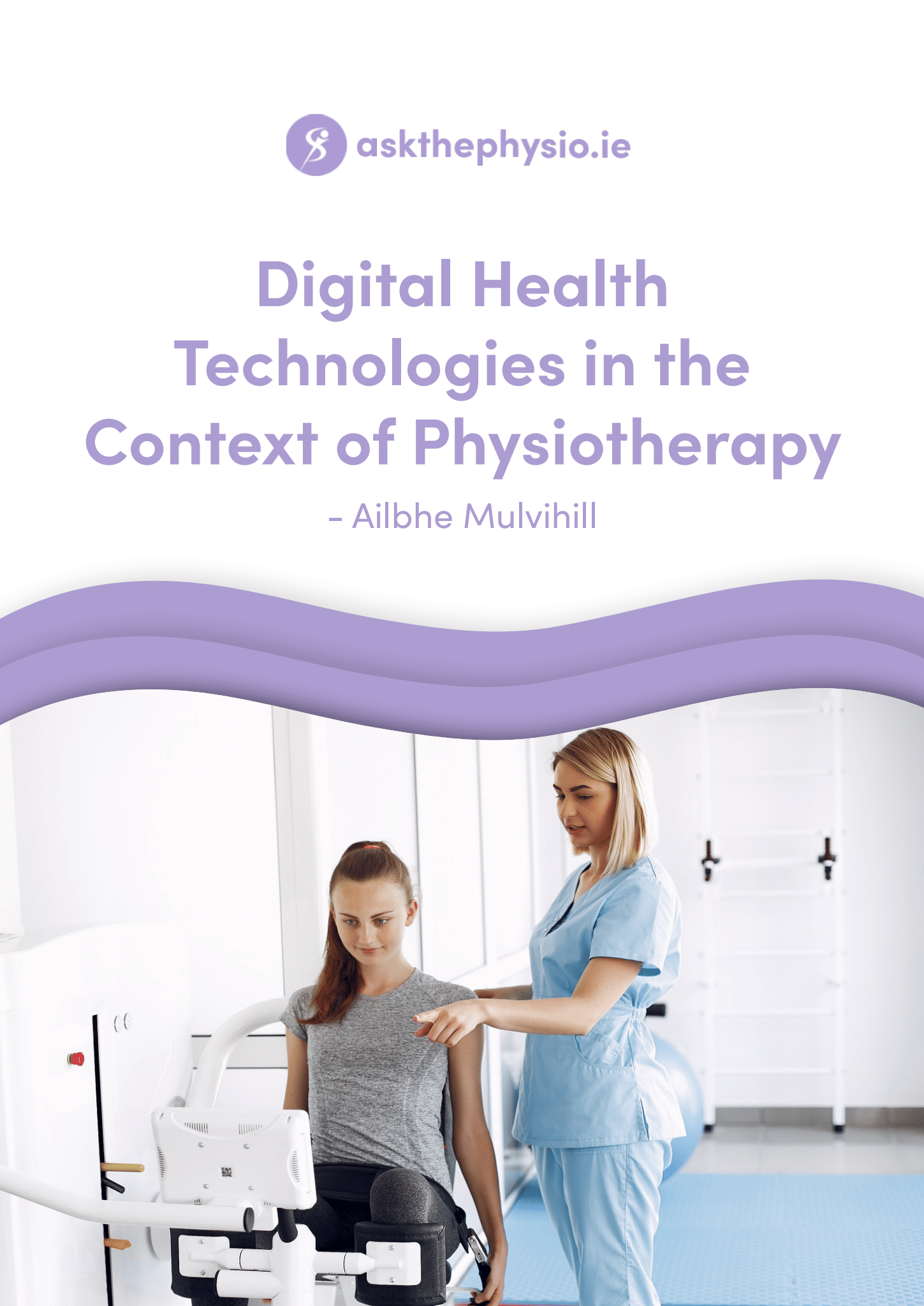
GUIDE
Digital Health Technologies in the Context of Physiotherapy
In terms of daily physiotherapy practice, there is potential for digital health technologies to be adopted for the use of receiving and capturing diagnostic imaging results, for documenting patient data (verifying a patient’s personal details and entering a patient’s free text clinical progression notes) and communicating with other clinicians on peer communication groups.
Videos
Instruction video: Physiotherapy Strength & Balance Exercises for those cocooning during COVID-19
Daily Practice Video: Physiotherapy Strength & Balance Exercises
Keeping strong and steady at home with the ISCP and Mícheál Ó Muircheartaigh
The ISCP wishes to extend our condolences to the family and friends of Mícheál Ó Muircheartaigh who died in June 2024.


